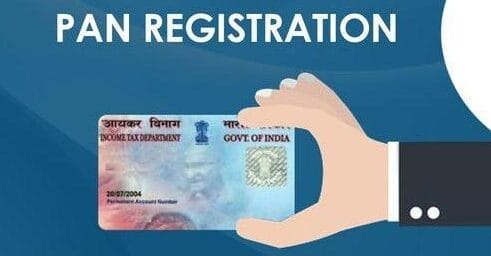A transfer pricing audit in India refers to the examination conducted by Indian tax authorities to evaluate the compliance of multinational enterprises (MNEs) with transfer pricing regulations. Here’s an overview of how transfer pricing audits are conducted in India:
Purpose of Transfer Pricing Audits
- Compliance Verification: The primary objective is to verify whether transactions between related parties are conducted at arm’s length prices, as required by Indian transfer pricing regulations.
- Risk Assessment: Assessing the risk of tax base erosion and profit shifting (BEPS) through inappropriate transfer pricing practices, such as underpricing or overpricing of intra-group transactions.
- Adjustment of Tax Liability: If discrepancies are found between the declared prices of intra-group transactions and arm’s length prices, tax authorities may propose adjustments to taxable income or tax assessments.
Process of a Transfer Pricing Audit in India
- Notification: MNEs are typically notified by the Transfer Pricing Officer (TPO) or tax authorities regarding the initiation of a transfer pricing audit. The notification outlines the scope, objectives, and timeline of the audit.
- Information Request: Tax authorities request comprehensive documentation and information related to intra-group transactions, transfer pricing policies, financial statements, and relevant business operations.
- Field Work and Interviews: Tax officials conduct field visits and interviews with key personnel to understand the nature of intra-group transactions, transfer pricing methodologies applied, and the rationale behind pricing decisions.
- Transfer Pricing Documentation Review: Review and analysis of transfer pricing documentation, including transfer pricing study reports, contemporaneous records, and supporting evidence.
- Adjustments and Assessments: Based on the findings of the audit, tax authorities may propose adjustments to taxable income by recharacterizing transactions or adjusting prices to align with arm’s length standards.
- Dispute Resolution: MNEs have the option to challenge the transfer pricing adjustments through administrative appeals within the tax department, mutual agreement procedures (MAP) under tax treaties, or litigation before tax tribunals and courts.
Key Considerations in Transfer Pricing Audits in India
- Documentation Requirements: Maintaining comprehensive and contemporaneous transfer pricing documentation is crucial to substantiate compliance with Indian transfer pricing regulations.
- Risk Mitigation Strategies: Proactively identifying and addressing transfer pricing risks through robust transfer pricing policies, documentation practices, and compliance procedures.
- Expert Advice: Engaging with transfer pricing specialists or consultants with expertise in Indian transfer pricing regulations and international standards to navigate audit challenges effectively.
- Global Coordination: Ensuring consistency in transfer pricing policies and compliance across jurisdictions to minimize audit risks and align with global transfer pricing standards.
Importance of Transfer Pricing Audits in India
- Compliance Assurance: Ensures compliance with Indian transfer pricing regulations, mitigating risks of penalties, interest, and potential tax assessments.
- Tax Optimization: Optimizes tax positions by ensuring that intra-group transactions are priced in accordance with arm’s length principles, thereby reducing tax exposures and uncertainties.
- Risk Management: Proactively managing transfer pricing risks through rigorous documentation, audit defense strategies, and proactive engagement with tax authorities.
Transfer pricing audits in India are critical for MNEs to demonstrate compliance with transfer pricing regulations, mitigate tax risks, and optimize their global tax positions. Effective preparation, comprehensive documentation, and strategic engagement with transfer pricing consultants are essential to navigate transfer pricing audits successfully and achieve favorable outcomes.
At Ujjwal Gupta & Co
We, at Ujjwal Gupta & Co, are dedicated to delivering personalized, high-quality solutions tailored to meet your financial and business needs. With our team of professionals and a client-first approach, we ensure that every challenge is met with expert guidance and strategic insight.
We are dedicated to ensuring your business’s success by providing best service practice available in the industry and that too at a cost effective pricing. Our team of experts is excited to work with you and provide the support you need to thrive in the Indian business landscape.
Our only motive is to create Value for Our Clients and accordingly, have a Client Value System at our Office.
So, let us help you navigate the complexities of finance and compliance, empowering you to focus on what matters most — growing your business. Get in touch today, and take the first step towards financial peace of mind.
A transfer pricing audit is a review conducted by tax authorities to ensure that the prices set for transactions between related parties (associated enterprises) comply with the arm’s length principle as outlined in Indian tax laws. The audit assesses whether the transfer pricing documentation is adequate and accurately reflects the nature of the transactions.
A transfer pricing audit can be triggered by various factors, including:
- Significant international transactions between associated enterprises.
- Discrepancies or irregularities in the transfer pricing documentation.
- A large variation in profit margins compared to industry benchmarks.
- Previous tax assessments or scrutiny that raised concerns about transfer pricing practices.
The role of a transfer pricing auditor includes:
- Evaluating the adequacy and accuracy of transfer pricing documentation.
- Assessing compliance with Indian transfer pricing regulations and the arm’s length principle.
- Analyzing intercompany pricing methodologies and justifying the selected methods.
- Providing recommendations for improving transfer pricing practices to mitigate risks.
During a transfer pricing audit, the following documentation is typically required:
- Master File containing global operational details.
- Local File with specific information on the taxpayer and its related-party transactions.
- Transfer Pricing Studies justifying the arm’s length pricing methods used.
- Comparability analyses and industry benchmarks.
- Details of the financial transactions between associated enterprises.
The transfer pricing audit process generally involves:
- Notification: The taxpayer receives a notification from the tax authorities about the audit.
- Documentation Review: The auditor reviews the provided transfer pricing documentation and analyses.
- Field Visit: The auditor may conduct field visits to assess the business operations.
- Interviews: The auditor may interview key personnel involved in transfer pricing decisions.
- Report Generation: A report is prepared summarizing findings and recommendations.
Common challenges during a transfer pricing audit include:
- Incomplete or inadequate documentation to support transfer pricing methods.
- Difficulty in finding appropriate comparables for pricing analysis.
- Disputes over the choice of transfer pricing methods.
- Lack of understanding of local and international regulations by key personnel.
The outcomes of a transfer pricing audit can include:
- No adjustment: The auditor finds the transfer pricing practices compliant.
- Adjustment: The auditor may propose changes to the transfer pricing, resulting in increased tax liabilities.
- Penalties: If non-compliance is identified, penalties may be imposed for failure to maintain adequate documentation or for underreporting income.
- Recommendations: The auditor may provide suggestions for improving transfer pricing practices.
If a taxpayer disagrees with the audit findings, they have the option to:
- Respond to the audit report with additional documentation or explanations.
- Request a meeting with tax authorities to discuss discrepancies.
- Appeal the audit findings through the Dispute Resolution Panel (DRP) or escalate the matter to the Income Tax Appellate Tribunal (ITAT) if necessary.
Taxpayers can prepare for a transfer pricing audit by:
- Maintaining comprehensive and up-to-date transfer pricing documentation.
- Regularly reviewing and updating transfer pricing policies to ensure compliance.
- Conducting internal reviews or pre-audit assessments to identify potential issues.
- Training relevant staff on transfer pricing regulations and documentation requirements.
Transfer pricing adjustments can lead to several implications, including:
- Increased tax liabilities due to re-assessment of income.
- Potential interest and penalties for non-compliance.
- Impact on financial statements and forecasts.
- Strain on business operations due to potential disputes and negotiations with tax authorities.
Why Choose UGC?

Client Centric Approach
Client is the key driver of our service offerings. Our approach to service offerings is based on a client centric and customized approach. Our specialized teams are a mix of technical and industry experience in order to serve clientele for their specific needs.

Team Work
We have built high performing teams supported by strong work ethic. Our team is a mix of experts, professionals and support staff from technical and varied academic, social and ethnic backgrounds. We believe diversification plays a vital role in motivating the team.

Quick Turnaround
We always endeavour for a quick turnaround time to serve our clientele. We are supported by an experienced and client focussed support teams to offer timely services to our clientele. In case of any business exigencies and time sensitive service requirements, you can always count on us.

Open Communications
We believe that open communication is the core principle in order to demonstrate trust, build long lasting and valuable relationships with clientele. We are committed to ensuring transparency in communication, service offerings and delivery. We provide professional services to our clients.

Client Value System
We value for the Client time and thus, we offer services that are value for money. Quality professional services are provided to our clients, so that they are able to achieve their desired results. We are a quality trademark in the industry and thus, our clients count on us always.

Quality in Delivering Work
Our service offerings are driven by quality and reviews at every level. We strive to provide a qualitative and value-added delivery to our clientele. At all times, we endeavour to provide exceptional client service by meeting client expectations and driving client satisfaction.


















